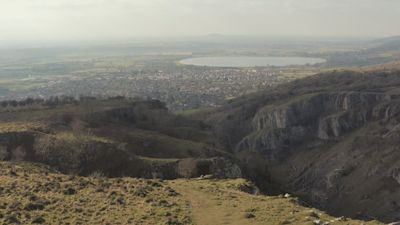The rural Somerset area with soaring coronavirus rates

Watch Caron Bell's report
A small area in Somerset is experiencing the same levels of coronavirus seen in much larger, urban areas.
Segdemoor now has the third worst rates in the South West, with more than 100 new cases recorded on Tuesday 4 January alone.
Over the past seven days, the worst area in the South West was Swindon, which saw 435.7 cases per 100,000 people. Second was Gloucester, at 421.3, and then in third place, Sedgemoor, which had a rolling rate of 414.8 per 100,000 people in the seven days up to December 30.
And the rates in Sedgemoor are increasing. On Tuesday 4 January, it recorded 116 new cases - the first time it has ever had more than 100 new ones in a single day - meaning there are now more than 500 cases in the district.
In Axbridge, Julie knows all about it. She's just emerged from isolation after she and four other relatives went down with the virus over Christmas.
"Ugh, the loss of taste, smell, just generally feeling unwell. It's been horrible. And my husband's still suffering."
"Look, we're all very concerned. All very concerned. So I think we're all being very careful about what we're doing now. Just been into the local pharmacy to pick up a prescription for my son, and it's noticeable that people are being extra careful about how they're managing their space."
No one knows exactly why Sedgemoor's rates are so bad, but some people we spoke to are worried about mixing among children.
"We've got the reservoir which is a local area that young children tend to meet at. And unfortunately on several occasions I've actually seen children being dropped off by their parents to meet up with their friends."
In Sedgemoor, like the rest of England, schools are now shut to most pupils. For Roxy and Zoe in Cheddar it won't make any difference. They've been homeschooled since November and their mother Kayleigh Pople thinks all parents should have been encouraged to do the same.
"I think the government, if they gave parents the choice, many parents - especially in this village, that I know of - would have kept their children at home and homeschooled and continued to do so, and the risks to everybody, including the staff especially, and the vulnerable and key worker children, would have been a lot less."
Read more: